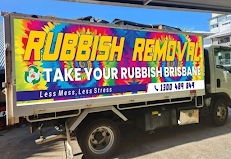Bulky waste refers to large items that are difficult to dispose. Dealing with bulky waste can be a difficult, time-consuming and stressful task. Improper disposal of bulky waste not only creates eyesores in neighbourhoods but also poses environmental and legal concerns. Therefore, knowing the right methods for removal of bulky waste is important. In this blog, we’ll explore into different strategies homeowners can use to get rid of bulky waste responsibly. From utilizing municipal pickup services and hiring professionals to DIY disposal techniques and exploring recycling opportunities. We’ll also touch on the importance of legal compliance and environmental considerations when disposing of large items. By the end of this read, you’ll have a better understanding of how to tackle bulky waste in your residential area, ensuring a cleaner and more sustainable living environment for everyone.
What Is Bulky Waste?
Bulky waste refers to big objects or materials that are hard to get rid of using the regular ways of waste disposal in our homes. These objects are normally too big to fit into garbage cans or sacks. For instance, bulky waste includes old furniture for example couches, mattresses and tables; large appliances such as fridges, washing machines and cookers; carpets and bicycles among other oversized things; garden wastes like tree branches or large pots. Bulky waste needs special handling procedures because of their size and sometimes material composition. Most municipalities have special collection days or services where they pick up bulky waste from households.
Strategies for Removal of Bulky Waste
- Municipal Services
Utilizing municipal services for bulky waste removal involves taking advantage of the waste management systems provided by your local government. Many cities and towns offer scheduled pickups or designated drop-off locations specifically for large items like furniture, appliances, or other bulky household waste. These services are convenient because they typically have clear guidelines on what they will collect and when, making it easier for residents to dispose of items that are too large for regular trash pickup. It’s a reliable option as the municipality handles the logistics of collection and ensures proper disposal, often following environmental regulations.
- Hiring Professional Services
When dealing with significant amounts of bulky waste or items that are particularly heavy or awkward to move, hiring professional waste removal services can be highly beneficial. These companies specialize in removing large items safely and efficiently. They have the necessary equipment, such as trucks, cranes, or lifting tools, to handle heavy loads without damage to your property. Professional services also ensure that waste is disposed of responsibly, either through recycling, donation to charities, or proper disposal at licensed facilities. While it may involve a cost, it saves you time and effort while ensuring compliance with local waste disposal regulations.
- DIY Disposal
For smaller-scale bulky waste disposal projects, such as clearing out a garage or renovating a room, DIY disposal can be a cost-effective option. This approach typically involves renting a truck or trailer to transport items to a local landfill, recycling centre, or donation site. It requires more effort on your part, including loading and unloading heavy items, but it allows for flexibility in choosing where and how your waste is disposed of. DIY disposal is suitable for those who prefer hands-on involvement in managing their waste and who have the means to transport items safely.
- Recycling and Reuse
Instead of discarding bulky items as waste, consider options for recycling or reuse. Many communities have recycling programs that accept items like metal, wood, electronics, and appliances. Recycling these materials reduces landfill waste and conserves natural resources by turning them into new products. Additionally, donating gently used items to charities, thrift stores, or community organizations extends their lifespan and benefits those in need. This approach not only reduces environmental impact but also supports sustainability efforts within your community.
- Community Initiatives
Community-driven initiatives for bulky waste management encourage collaboration among residents to tackle waste-related challenges collectively. These initiatives may include neighbourhood clean-up days, bulk item exchanges, or recycling drives organized by local associations or community groups. Such events promote awareness of waste reduction and encourage responsible disposal practices among community members. Participating in these initiatives fosters a sense of community pride and strengthens neighbourhood bonds.
Legal and Environmental Considerations For Removal of Bulky Waste
When you need to get rid of bulky items, there are important rules and environmental factors to think about. These guidelines are designed to protect both people and the planet. Sometimes, you might need a permit to remove large items, especially if they contain hazardous materials like old paint or chemicals. Also, different areas have different rules about how and when you can dispose of bulky waste. It’s important to follow these regulations to avoid fines or penalties. Many bulky items can be recycled or reused instead of being thrown away. This reduces the amount of waste going to landfills and helps conserve resources. Improper disposal of bulky waste can harm wildlife and their habitats. By following proper disposal methods, we can minimize this impact.
Tips for Efficient Bulky Waste Management
Efficient bulky waste management begins with planning ahead. When dealing with large items like furniture or appliances, consider reusing them if possible, either by donating to charities or selling online. Ensure items are properly prepared for disposal, such as removing doors from appliances or draining fluids from machinery. Take advantage of local bulky waste pickup services to schedule pickups for convenient and responsible disposal. Additionally, explore recycling options for items that can be recycled, like metals or electronics. By following these steps, you can effectively manage bulky waste while minimizing environmental impact and keeping your community clean.
Why Consider Take Your Rubbish Brisbane For Bulky Waste Removal Services?
When it comes to managing bulky waste in Brisbane, Take Your Rubbish Brisbane can be a great choice for efficient removal services. We’re experts at taking care of big stuff that regular trash services can’t handle. Whether you’ve got old furniture, appliances, or garden waste like tree branches, we’re the perfect solution for getting rid of it all. Our expertise ensures that these items are handled safely and responsibly, reducing the stress and hassle of managing bulky waste on your own. Our team is equipped with the necessary tools and expertise to handle heavy loads efficiently, ensuring minimal disruption to your property. Moreover, our pricing is transparent and competitive, making it easy to budget for rubbish removal. For these reasons Take Your Rubbish Brisbane can be a best choice for bulky waste removal services.
Conclusion
Managing bulky waste doesn’t have to be difficult and stressful task. By understanding the options available and considering the environmental impact, you can make responsible choices that benefit both your community and the planet. Whether you utilize municipal services for convenient pickups, hire professionals for heavy lifting, opt for DIY disposal for smaller projects, or explore recycling opportunities, each method contributes to cleaner neighbourhoods and sustainable living. Remember, following legal guidelines ensures you avoid penalties and protect the environment. By planning ahead, preparing items properly, and exploring reuse and recycling options, you can effectively manage bulky waste while making a positive impact on your surroundings. Together, these efforts create a cleaner, safer, and more enjoyable living environment for everyone.




